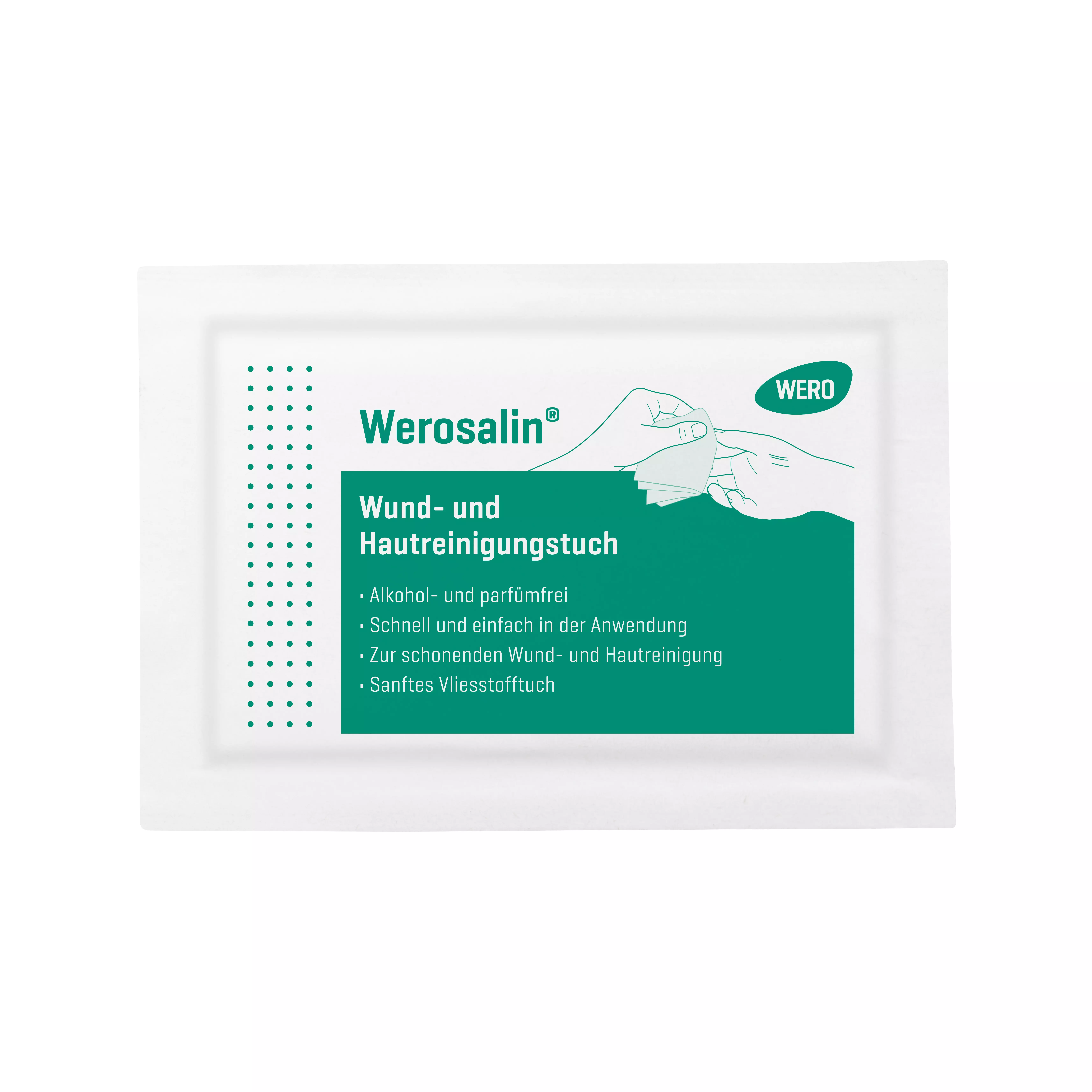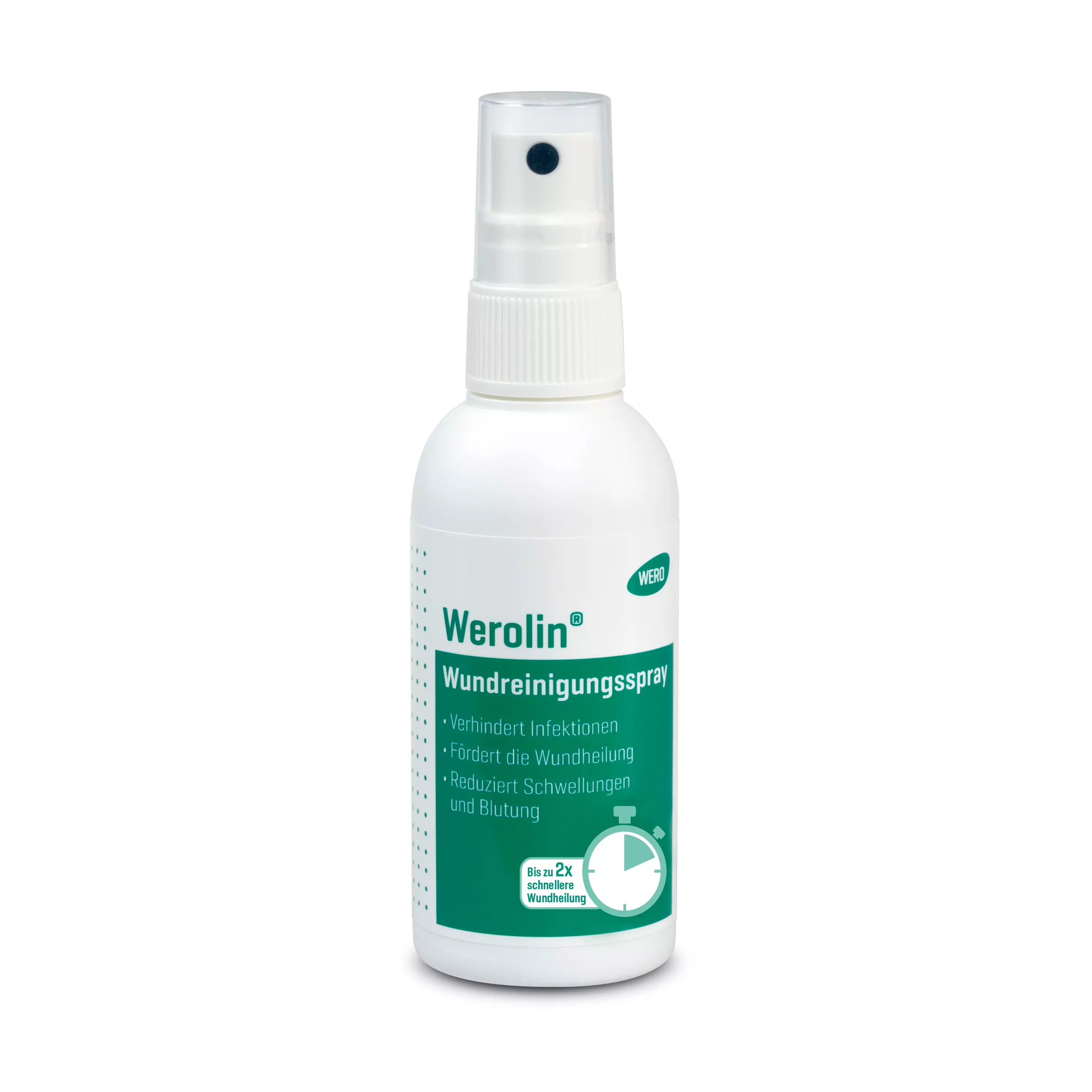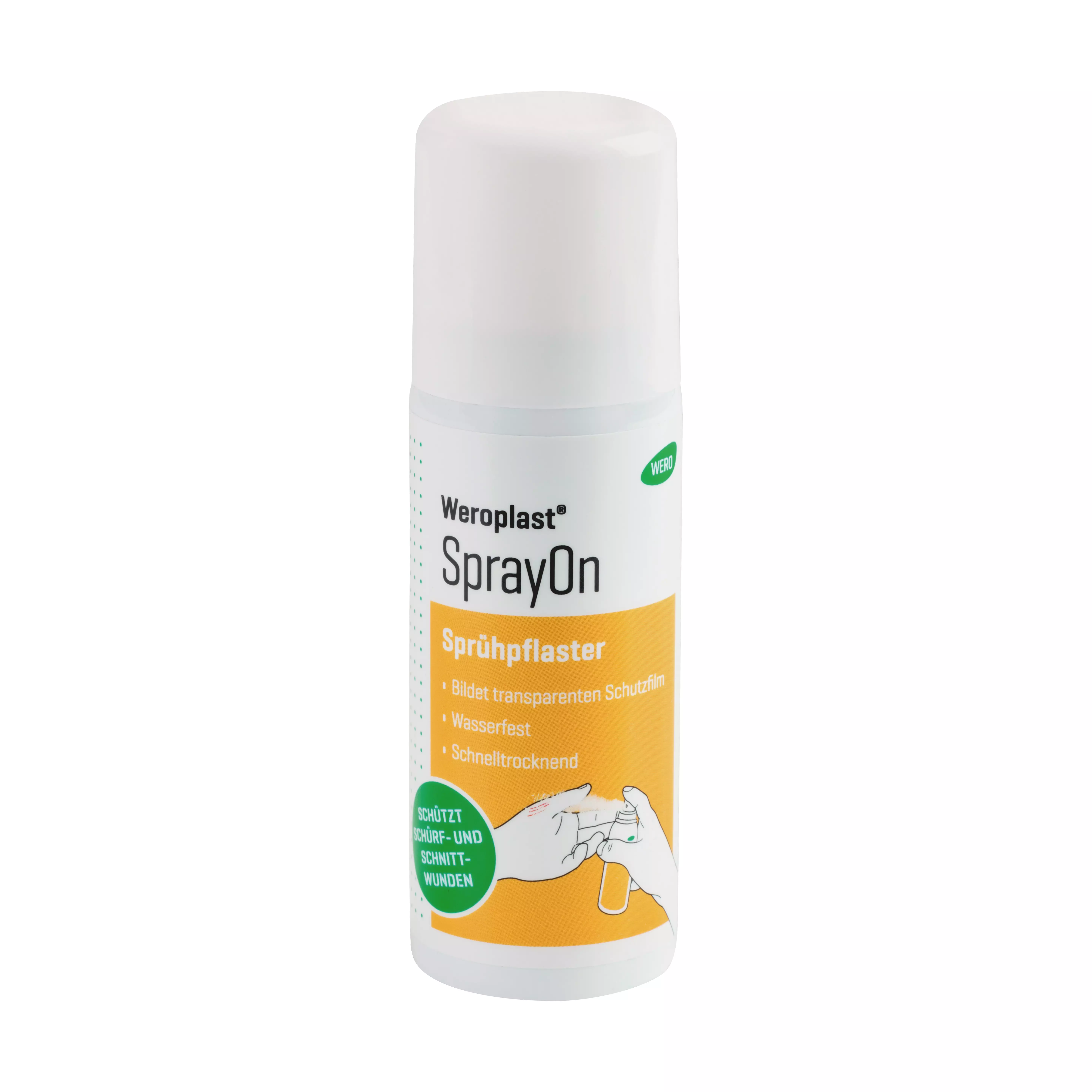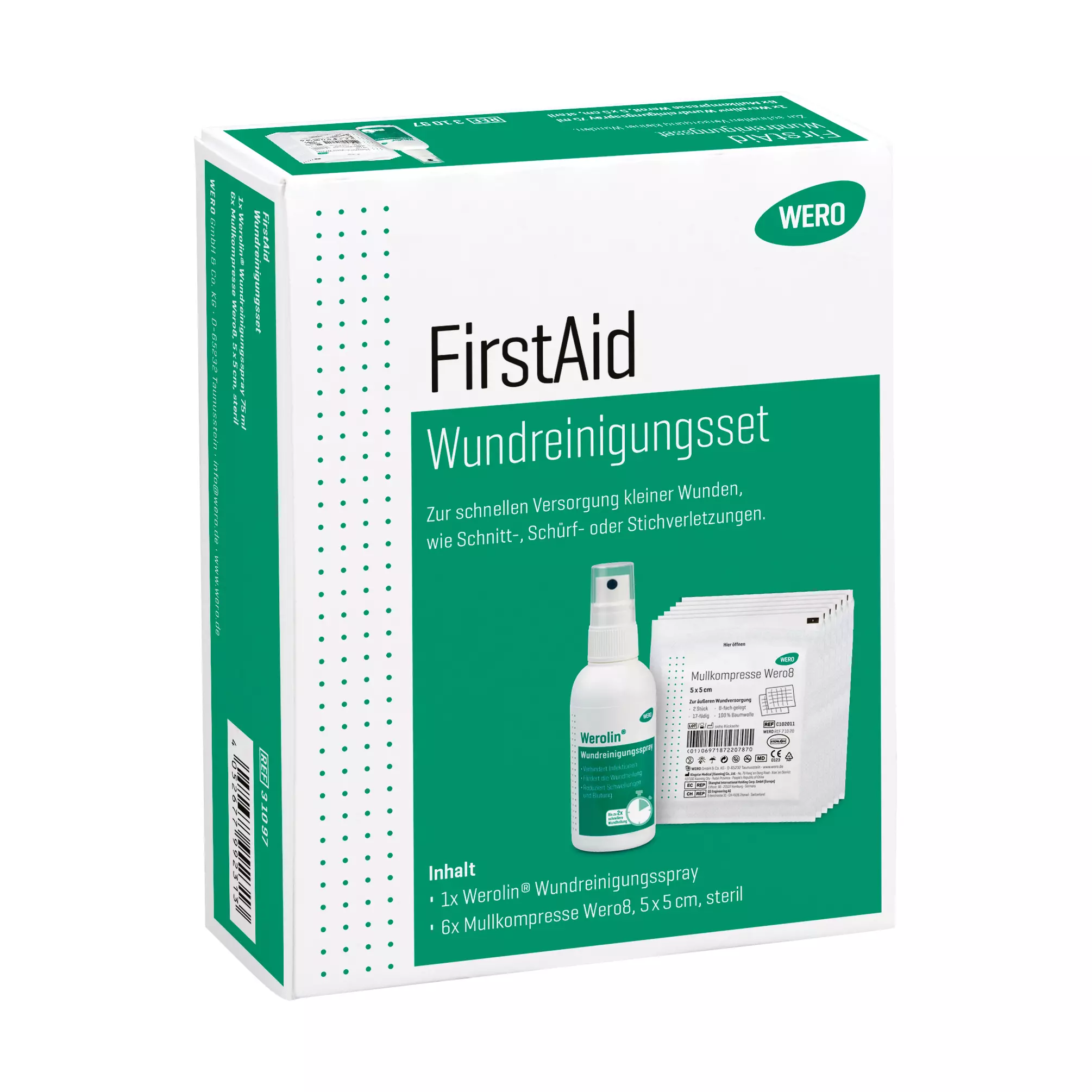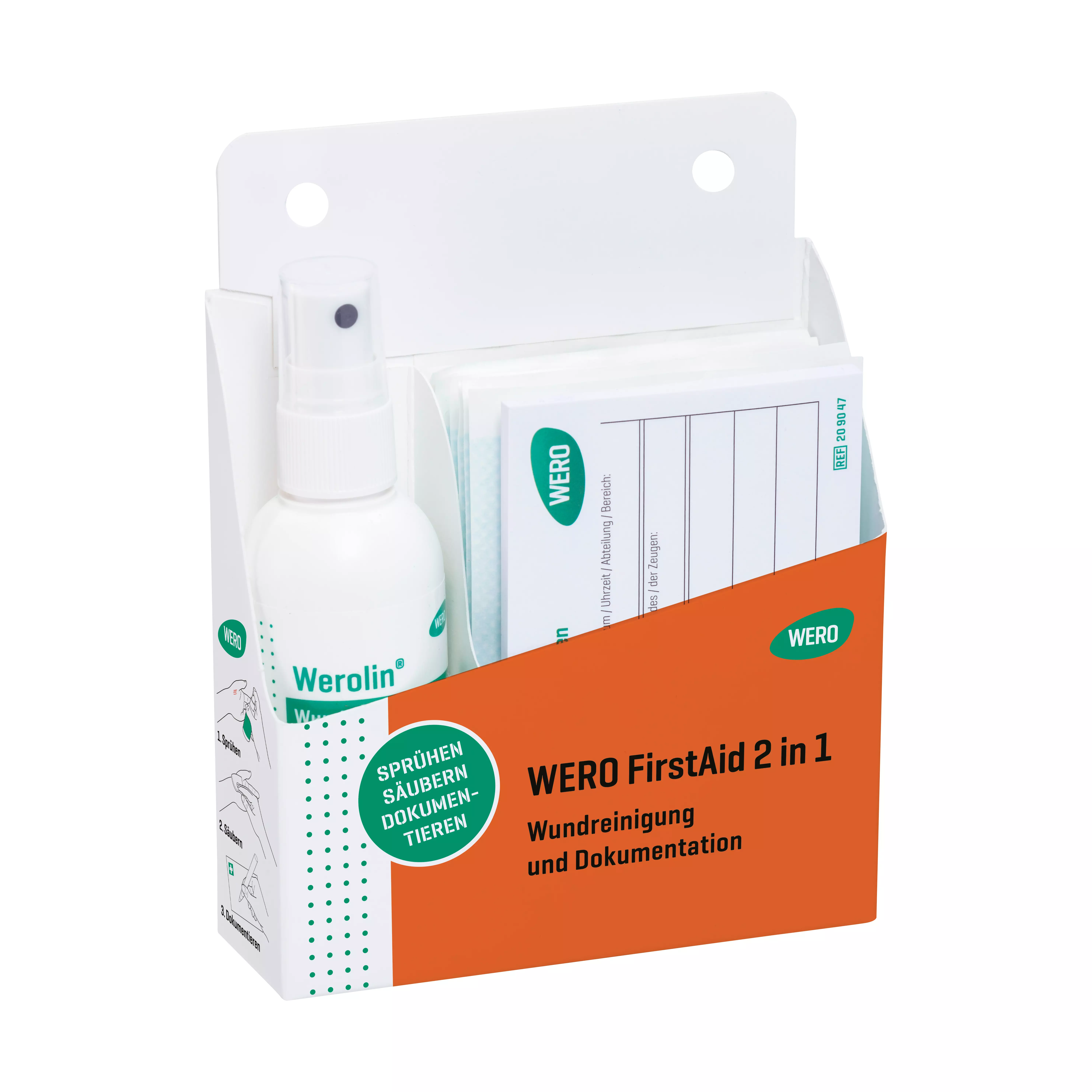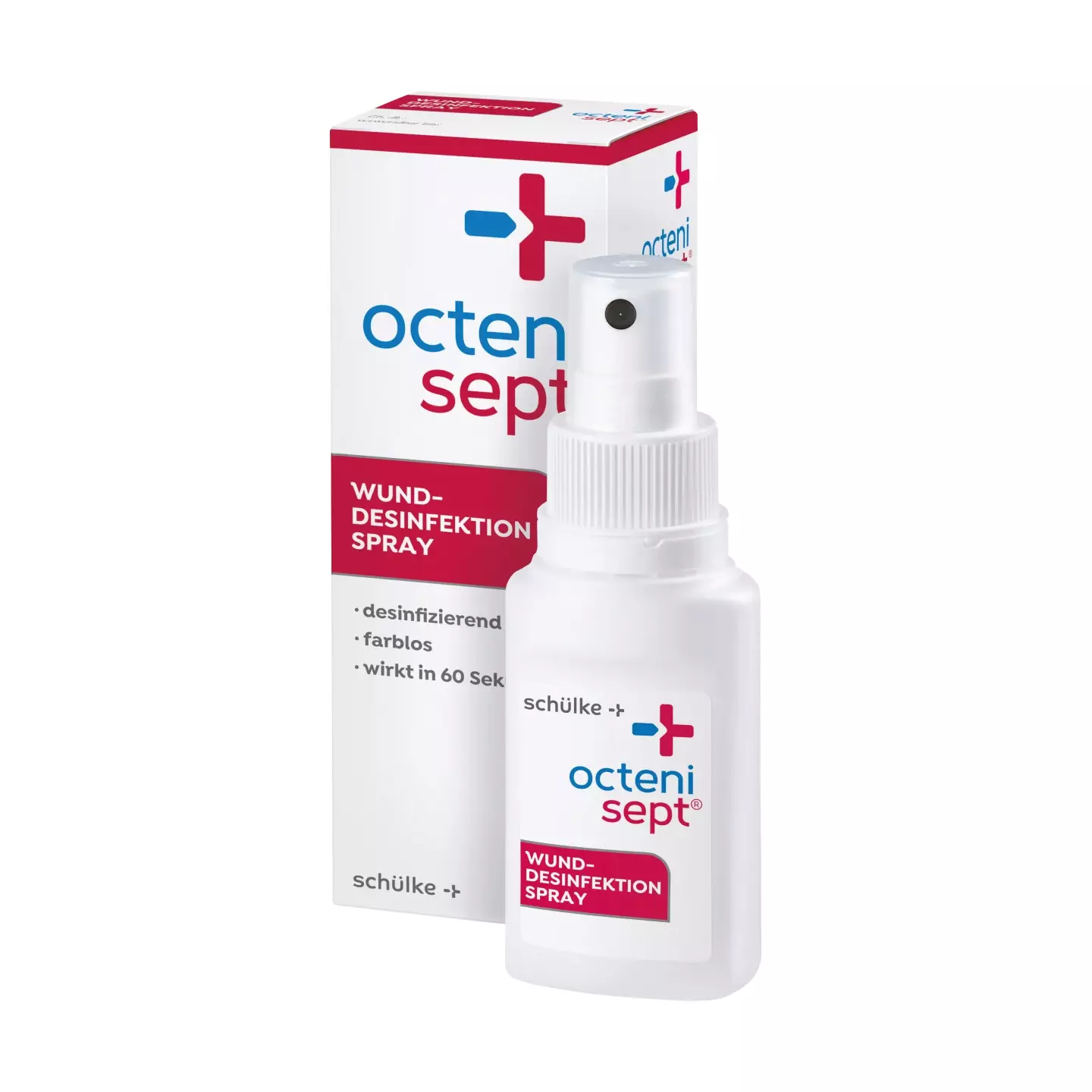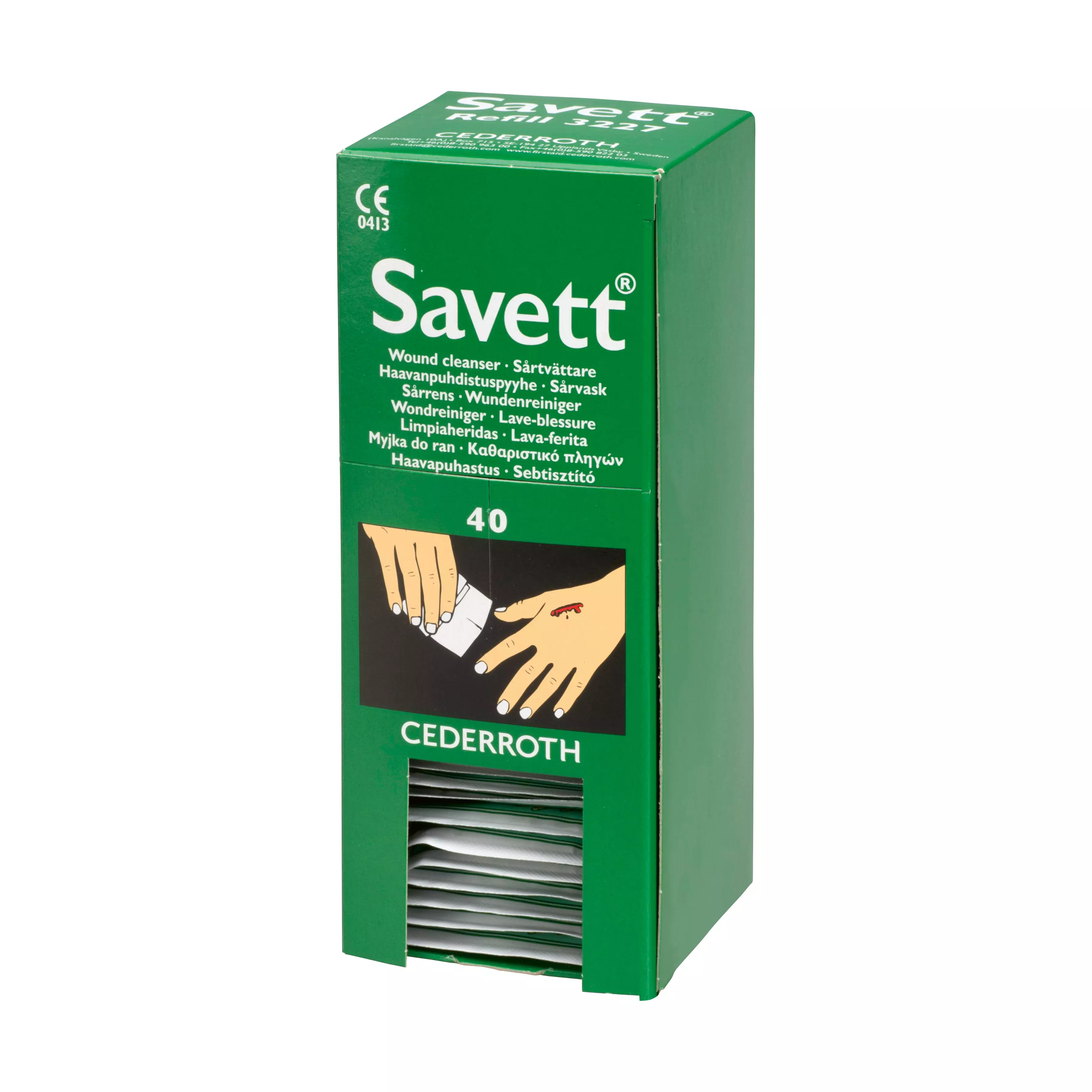Wunddesinfektion und Wundreinigung kaufen
Wunddesinfektion und Wundreinigng sind entscheidende Schritte in der Erstversorgung von Verletzungen, um eine Infektion zu verhindern und eine optimale Heilung zu fördern.
Available, delivery time: 1-3 days
Content: 0.075 l (€144.67* / 1 l)
Available, delivery time: 1-3 days
Content: 0.05 l (€154.00* / 1 l)
Available, delivery time: 1-3 days
Available, delivery time: 1-3 days
Available, delivery time: 1-3 days
Content: 0.05 l (€211.80* / 1 l)
Available, delivery time: 1-3 days
Content: 40 piece (€0.37* / 1 piece)
Available, delivery time: 1-3 days
Warum ist eine Wunddesinfektion wichtig für die Wundheilung?
Wunddesinfektion dient dem Schutz vor Keimen, Bakterien und Infektionen - insbesondere dann, wenn das Risiko hierfür entsprechend erhöht ist. Beispiele wären tiefere bzw. verunreinigte Wunden verursacht durch eine verschmutzte Glasscherbe oder einen rostigen Nagel. Im Normalfall reicht die Desinfektion der Wunde mit einem geeigneten Antiseptikum aus.
Die Wahl des richtigen Mittels zur Wunddesinfektion und -reinigung
Bei der Auswahl des richtigen Desinfektionsmittels für eine Wunde spielen der Wundtyp und der Zustand des Patienten eine entscheidende Rolle. Während Alkohol, Wasserstoffperoxid, Jodverbindungen, und Chlorhexidin weit verbreitet sind, haben sich auch neuere Wirkstoffe wie Octenidin und Polyaminopropyl Biguanide (PAB) als effektiv erwiesen.
Octenidin ist bekannt für seine starke antimikrobielle Wirkung und wird oft bei der Behandlung von schwer heilenden Wunden oder in medizinischen Einrichtungen verwendet, um Infektionen vorzubeugen. Es ist besonders vorteilhaft, da es kaum hautreizend wirkt und auch bei längerem Gebrauch sicher ist.
Polyaminopropyl Biguanide, bekannt unter seinem Kürzel PAB, hat eine breite antimikrobielle Wirkung und zeichnet sich durch seine sanfte Wirkung auf die Haut aus, was es ideal für die Anwendung bei empfindlicher Haut oder für Patienten macht, die zu allergischen Reaktionen neigen. Beide Wirkstoffe sind in ihrer Anwendung effektiv und bieten je nach Situation der Wundbehandlung eine wichtige Option zur Infektionskontrolle.
Wie wendet man ein Wunddesinfektionsspray richtig an?
Bei der Wunddesinfektion ist darauf zu achten, dass die Wunde zunächst gereinigt wird. Es ist wichtig, die Wunde von Schmutz und Fremdkörpern zu befreien, um eine Infektion zu vermeiden. Danach kann die Wunde mit dem Spray desinfiziert werden. Achten Sie darauf, dass das Desinfektionsmittel die Wunde vollständig bedeckt und mindestens 30 Sekunden einwirken kann.
Kann eine Wunde auch mit Händedesinfektionsmittel desinfizieren werden?
Alkoholische Desinfektionsmittel kommen bei der Händedesinfektion zum Einsatz und können verwendet werden, um die umgebende Haut der Wunde zu desinfizieren. Bei der Wunddesinfektion sollte jedoch auf ein geeignetes Wunddesinfektionsmittel ohne Alkohol geachtet werden, da es durch das Auftragen eines alkoholischen Desinfektionsmittels zum Brennen der Wunde und einer gestörten Wundheilung kommen kann.
Wundreinigung – Eine saubere Grundlage für die Wundheilung
Die Wundreinigung ist der erste Schritt der Wundversorgung, denn: nur eine saubere Wunde kann gut heilen. Bei WERO finden Sie eine Auswahl an essenziellen Produkten für eine verlässliche Wundreinigung und Desinfektion, wie Wundreinigungssprays, Wund- und Hautreinigungstücher, Sprühpflaster oder Wunddesinfektionsmittel.
Wie reinige ich eine Wunde richtig?
Im Folgenden erklären wir Ihnen, wie Sie eine Wunde korrekt reinigen:
- Die Hände gründlich waschen / desinfizieren.
- Die Blutung mit einer sterilen Kompresse stoppen.
- Wundreinigung: Tragen Sie ein Wundreinigungsspray aus 10cm Entfernung auf die gesamte Wunde großzügig auf. Stellen Sie dabei sicher, dass Schmutzpartikel ausgeschwemmt werden. Größere Fremdkörper wie Glassplitter ggf. mit Hilfe einer Pinzette entfernen.
- Die betroffene Stelle und umliegende Haut im Anschluss mit einer sterilen Kompresse trocknen.
- Wundschutz: Wunde mit einem geeigneten Pflaster oder Verband abdecken.
- Die Heilung mit Hilfe einer Wund- und Heilsalbe unterstützen.
Welche Arten der Wundreinigung gibt es?
Die gängigsten Verfahren der Wundreinigung sind:
- Mechanische Wundreinigung zur Entfernung von Verschmutzungen, Fremdkörpern oder Krankheitserregern, z.B. mit isotoner Kochsalzlösung (NaCl 0,9)
- Antiseptische Wundreinigung zur Desinfektion, z.B. mit Wundantiseptika
- Chirurgische Wundreinigung/Debridement zum Abtragen von Gewebe
- Autolytische Wundreinigung zur Vorbereitung auf ein Debridement, meist durch Gele.
- Biologische Wundreinigung durch enzymhaltige Präparate oder steril gezüchtete Maden.
Kann eine Wunde auch mit Wasser durchspült bzw. gereinigt werden?
Zum Spülen von Wunden sollten grundsätzlich nur sterile Lösungen verwendet werden, da Trinkwasser unter Umständen nicht die nötige mikrobiologische Reinheit hat. (Quelle: RKI)

